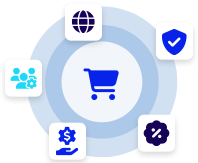User management in software refers to the process of administering and controlling user accounts and their associated permissions within a software application or system. It involves tasks such as creating user accounts, assigning roles and permissions, managing user credentials, and controlling access to resources and functionalities based on user privileges.
Here are some key aspects of user management in software:
User Registration and Authentication: User management typically begins with user registration, where individuals create user accounts by providing necessary information such as username, email, and password. Authentication mechanisms, such as username/password login or multi-factor authentication, are implemented to verify user identity and ensure secure access to the system.
User Roles and Permissions: User management involves defining different roles or groups within the software application. Each role is associated with specific permissions and privileges that determine what actions and functionalities a user can access. Common roles include administrators, managers, and regular users. Role-based access control (RBAC) is commonly used to manage user roles and permissions.
User Provisioning and Deactivation: User management includes the process of provisioning user accounts, which involves creating user profiles, assigning roles and permissions, and providing initial access to the application. Similarly, when a user account is no longer needed or becomes inactive, user management handles the deactivation or removal of the account from the system.
Access Control: User management plays a crucial role in controlling access to various resources and functionalities within the software application. It ensures that users can only access the features and data that they are authorized to use based on their assigned roles and permissions. This helps maintain data security and privacy.
User Profile Management: User management involves maintaining user profiles, which may include personal information, contact details, and preferences. Users can typically update their profiles, such as changing passwords, updating email addresses, or modifying other relevant information.
User Activity Monitoring and Logging: User management often includes monitoring and logging user activities within the software application. This helps track user actions, detect suspicious or unauthorized behavior, and maintain an audit trail for security and compliance purposes.
User Support and Helpdesk: User management may also encompass providing support to users, addressing their inquiries, and managing user-related issues. This includes assisting users with account-related problems, password resets, or troubleshooting access-related difficulties.
Effective user management is crucial for maintaining security, ensuring proper access control, and delivering a personalized user experience within software applications. It allows administrators to efficiently manage user accounts, permissions, and resources, while enabling users to securely and conveniently interact with the software system.













